
The Public Services (Social Value) Act (2012) came into force in 2013. Its goal: to ensure the vast sums handed down by the Government to the public sector produce benefits – or ‘social value’ – beyond simply providing services.
The act created an expectation: those receiving public money would spend it in ways that maximise the economic, social and environmental and wellbeing benefits for local communities.
But working out just what activities fit into these broad-brush categories is far from straightforward. Both buyers of public services and their providers have been grappling to define and quantify social value in their tenders and responses ever since.
If you bid for public sector tenders, you may be aware that further updates in procurement legislation have landed more recently. But are you clear on what these changes mean for your next response?
If not, you’re not alone. But don’t worry. Here we look at the essential information you need to know and how to write your social value responses.
What is social value in procurement?
The Government spends over £600bn on public services and capital projects annually. That’s a lot of buying power. The 2012 act was a first attempt to extend the benefits of that spending beyond the commissioned service or activity.
And the devolved UK governments have their own versions you’ll need to be aware of if you’re tendering for business outside England. Scotland’s Procurement Reform Act 2014 and Wales’ Well-being of Future Generations Act 2015 both have similar goals.
So, social value is the benefits public spending produces that go beyond a strictly financial value. It’s the softer positive outcomes from public investment, like the enhanced wellbeing in a community who now live near a newly reclaimed open space – or the self-esteem gained by a volunteer who helped create it.
But how do you quantify the feel-good factor among that community or the positivity felt by the volunteer? It’s not like simply tracking numbers of people receiving a service or the number of widgets produced. So we’ll also be looking at how you can measure your social value initiatives.
Modelling social value
The National TOMs (Themes, Outcomes and Measures) framework was first developed to help organisations understand and measure the three original social value themes of the 2012 act – social, economic and environmental. It was a joint effort by the Social Value Portal and the Local Government Association.
A review and update in 2021 adjusted and added to the themes. This brought them to five, with social and environmental being joined by innovation, growth and jobs.
Part-created by local government, TOMs is the social value measurement framework that local authority commissioners favour. It’s also likely to remain so for the foreseeable future. We’ll explore this in a bit more detail later on.
TOMs has evolved to give public and private sector bidders a consistent guide to measuring, reporting and improving their social value activities. Once you’ve got the hang of it, the framework provides a set of metrics you can incorporate into your own wider internal continuous improvement processes.
Developments: the Government’s Social Value Model
The 2012 act requires buyers of public services to consider social value in tenders, but not necessarily to evaluate it.
But since then we’ve been through austerity, Covid-19 – and seen climate change become a climate crisis. The combined effects mean it’s more important than ever to show how every last drop of value will be squeezed from taxpayers’ money.
And so the UK Government’s new Social Value Model came into force on 1 January 2021 for all Government departments, executive agencies and non-departmental public bodies (quangos). As of April 2022, it also applies to the NHS.
The model asks buyers to explicitly evaluate social value in procurement exercises. And to give the framework real teeth, all social value tender evaluations now have a weighting of at least 10%.
The model aims to put an end to the wildly varying weightings and metrics buyers have used to evaluate social value questions to this point. It offers a clear formula for evaluations and consistency in how bidders’ commitments are measured.
It also marks the end of the days when aspirational value statements and a few nice pictures of voluntary activities might cut it. Buyers now look for concrete social value campaigns that can be captured in KPIs and contract reviews.
Fortunately, the Government’s new model is gratifyingly logical and simple to follow, acting like a question-building toolkit. It provides a menu of suggested lead questions and model award criteria (the question detail, often bullet pointed). And it covers the measurement metrics – the evidence – you’ll need to produce to back up your response.
The menu of evaluation questions and model award criteria cover five core themes:
- Covid-19 recovery
- Tackling economic inequality
- Fighting climate change
- Equal opportunity
- Wellbeing
If you haven’t done so already, at a minimum it is worth familiarising yourself with the model’s quick reference table. (You’ll find the full range of documents about the model here if you want to dive deeper.)
Local authorities and social value
Note that the Government’s model doesn’t apply to all public sector tenders. Local authorities have the autonomy to set evaluations that reflect their own particular local priorities, and will likely continue using TOMs as their go-to framework. So county, borough and district council social value evaluations will continue to be localised for the foreseeable future.
This means social value in local authority tenders may still only be for consideration (not evaluation) and carry smaller weightings, at least for now. Those decisions are still in the hands of council commissioners.
But beware. Cash-strapped local authorities have been among the greatest advocates of social value. So you’re just as likely to find them giving higher weightings to evaluation questions than the Government’s model prescribes.
TOMs meets the Social Value Model
If you bid for both central and local government contracts, it’s likely you’ll have to demonstrate the social value you offer against both models over time.
Don’t be alarmed. If you compare the five main themes of each, they are broadly asking you about the same or similar benefits. If you measure up well against TOMs, chances are you also will against the Government’s Social Value Model.
For example, offering X number of apprenticeships to local school-leavers is tackling inequality and providing equal opportunity under the Government model. It also answers directly to the jobs theme in the updated National TOMs.
Of course, it’s important to understand how both models measure social value and how they differ in their methodology and language. To make matters clearer, below we’ve mapped out where National TOMs themes most clearly cross over with the Social Value Model themes and their sub-criteria. It’s not an exact science, but broadly speaking:
| National TOMs theme | Social Value Model theme(s) |
|---|---|
| Jobs – supporting organisations to promote local skills and employment | Covid-19 recovery Tackling economic inequality Equal opportunity |
| Growth – supporting the growth of responsible regional business | Covid-19 recovery Tackling economic inequality Equal opportunity |
| Social – creating healthier, safer and more resilient communities | Wellbeing (and features throughout) |
| Environment – decarbonising and safeguarding our planet | Fighting climate change |
| Innovation – promoting social innovation | Tackling economic inequality Wellbeing (and features throughout) |
Whichever framework you’re bidding within, all buyers spending public money now have clear guidance and templates to evaluate both the quantity and quality of your social value offer.
So scoring well on social value is no longer a bonus in tenders: it can be the difference between winner and also-ran.
Social value tender questions
Social value questions will ask you to explain how (and to what extent) you can deliver the defined extra benefits within the relevant community or area.
Questions in public sector tenders based on the 2012 Social Value Act have typically looked something like this:
Social
Describe your organisation’s commitment to tackling inequality in employment, skills and pay in the contract workforce.
Economic
What volunteering, work or student placement or apprenticeship opportunities will you provide?
Environmental
What environmental impacts will your work produce and how will you mitigate this?
However, if you regularly tender for public contracts, you may have noticed that social value evaluation questions can be a very mixed bag.
A quick sample of million-pound-plus local authority tenders published within a few months of each other illustrates just how much they can vary:
- One tender had no specific social value question at all, although elements, such as approaches to workforce recruitment, were scattered among questions.
- Another asked the responder to demonstrate ‘… how your proposal might offer social, economic or environmental benefits to the area and community … including job creation, improving environmental conditions and providing volunteering opportunities’ using a princely 300 words. Of course, that’s simply not enough.
- At the opposite end of the spectrum, a tender for an almost identical service featured three questions, each with word limits of 1,000 (two scored, one non-scored). Every response, including to the non-scored question, tied the successful bidder to social value commitments that would be written into the final contract.
In theory, the Government model will bring a more standardised approach to social value evaluations in central government tenders.
Understand local priorities
But be aware that buyers are likely to focus on the template questions and criteria that reflect local priorities and the specific service out to tender. The nature of the contract may mean the buyer settles on two or three specific themes from the model rather than covering them all.
For instance, a recent social value section in a Ministry of Justice tender (to deliver a service to prisons) concentrated entirely on employees. There were detailed sections on reducing the disability employment gap, equality and diversity in recruitment and tackling inequality in the workforce.
As we’ve seen, local authorities currently set their own criteria and objectives, which you’ll find set out in their individual strategic plans.
These plans will highlight the priority social value themes in that area, be that tackling youth unemployment or improving air quality. Evaluation questions will often be explicitly linked to these plans, either in the question itself or the accompanying specification. So you’ll need to be familiar with them – and what the local priorities are.
Seek out the plans on the council’s website and study and compare them. They’ll give you a clearer picture of the locality and its needs.
Remember that while the Government’s model sets the weighting bar at a minimum of 10%, some councils have already given weightings as high as 20% to social value in tenders. Doing your localised research will pay dividends.
Don’t assume social value evaluations will remain confined to the main invitation to tender (ITT) documents either. As evaluations become increasingly standardised, basic pass/fail social value criteria questions may well appear in pre-qualification questionnaires (PQQs) – alongside the odd supplementary written question.
And expect to have your feet held to the fire in terms of timescales. The Government model also includes suggested wording for requiring project plans. So you’ll often be expected to come up with not just a compelling social value offer but a clear timeline, usually in the form of a Gantt chart, showing how and when it will be implemented.
Examples of social value initiatives and activities
There are almost unlimited possible social value activities that your organisation could do – or may already be doing. In terms of the original Social Value Act’s core areas, examples could include:
Social
Sponsorship and participation in a local event, such as a charity walk
Environmental
A commitment to installing solar panelling on your premises
Economic
Committing to taking on X number of apprentices from local schools/colleges
If you’re responding to a tender based on the Social Value Model, relevant examples would be:
Covid-19 recovery
The number of employment opportunities you’ll make available to people made redundant or changing career as a result of the pandemic
Tackling economic inequality
Creating a diverse local supply chain
Fighting climate change
Reducing waste to landfill through the life of the contract, measured in tonnes
Equal opportunity
Becoming a Disability Confident employer
Wellbeing
Implementing the six standards of the Mental Health at Work commitment.
But before you start gathering examples of the social value activities and initiatives you offer, be crystal clear on the differences between core delivery, added value and social value. As a rule of thumb:
Core delivery is what you are contracted to do as laid out in the specification. Even if you do it really well and produce many positive outcomes, it’s still what you’re getting paid for.
Added value usually refers to delivering measurable savings for the buyer or describes a part of your offer that you have developed or resourced independently. In other words, something you are offering for free that goes above and beyond the specification.
Social value, by contrast, is concerned with the wider benefits of your activities to the whole community.
So a response on tackling climate change can’t just be pointing to savings made by reduced travel due to new, post-Covid remote working patterns. You didn’t create that, and your competitors will be offering similar savings.
To stand out, more remote working will be just part of a clear strategy for reducing your organisation’s environmental impact locally and nationally. Such a strategy would need ongoing commitment within your organisation, as well as the necessary resources given to it.
Let’s use the tackling climate change theme as an example. In order to pinpoint the current approach within your own organisation, ask yourself questions like:
- Do we have an environmental strategy, including sets of achievable targets?
- Who in the organisation is responsible for delivering these?
- What other initiatives have we introduced, or will we introduce, to reduce energy consumption?
- If staff still need to travel to work, do we support them to keep out of their cars and use public transport or cycle, such as through discount schemes or travelcard loans?
- What’s our organisational stance on single-use plastics?
- Do we require subcontractors or businesses in the supply chain to evidence certain environmental standards?
If you identify gaps or don’t have answers to questions like these, now’s the time to pin them down. Gather your decision-makers, take a stance and assign responsibilities. Set up the appropriate schemes and make social value a standing agenda item at team meetings.
How to answer social value questions
Take a structured approach to answering social value questions. Following these steps will ensure you’re thorough in your responses.
1. Read the question carefully and refer to the relevant framework
If you’re responding to a central Government or NHS tender, read the question carefully and cross-reference with the Government’s Social Value Model.
As buyers will be using the new model templates to shape evaluation questions, get to know the different strands of the model inside out. Reading the question carefully and cross-referencing it against the model will help identify where there is a focus on particular themes.
You don’t have to wait for the tender to land. Why not try using the model template questions to plan out responses and build a narrative in advance, identifying areas of strength and areas of weakness you can start to address?
For local authority tenders, do the same against the National TOMs.
2. Remember who is commissioning and do your homework
If it’s a government department commissioning services, they will use the model.
Councils will adapt their social value evaluations and themes to reflect local needs. Remember to read those local strategic social, economic and environmental plans and Joint Strategic Needs Assessments. Make note of the key themes or strategic goals that run through the documents. Quote them in your response and mirror the language they use around them.
Be mindful that social value benefits can cut across themes. Take the volunteer we considered early on in this article. Volunteering may have improved his self-esteem, but it may also have enhanced his chances of getting paid employment.
When bidding for contracts serving a particular geographical area, it’s often worth breaking down your beneficiaries into:
- people – community, workforce
- places – the local environment, built or natural
- economy – local small and medium-sized enterprises (SMEs) and supply chains, charities, community organisations.
3. Set targets and commit
Buyers want more than fluffy statements of intent: they want concrete, deliverable commitments.
Maybe you’re not there yet – that’s OK. Demonstrating you have an achievable target – such as reducing energy consumption by 10% in the next two years – and a plan to get there is what they want to see.
Don’t be vague. Your responses should provide:
- details of who in your organisation is responsible for meeting the target
- how you plan to reach it
- how long it will take to get there
- statistics and data to demonstrate its achievability.
And avoid the temptation to be over-ambitious. Prudent buyers want to see promises that are achievable, as they may well be looking to include delivering them in the contract.
4. Bring it to life
Social value is about benefits to communities and people. To stand out, you need to demonstrate a willingness to go the extra mile to provide benefits to those people.
Providing genuine social value will produce individual stories and outcomes that humanise and give context to the commitments you make and the data and statistics you produce to back them up.
Encourage staff to record work that demonstrates social value to use as case studies in responses. Take pictures of charity or community events and ask for testimonials highlighting the value of your work.
Measuring social value
Quantifying or measuring positive-but-abstract benefits can feel like a tough ask. But it is fast becoming as much of a requirement as having the right policies in place or ensuring your staff have the appropriate qualifications.
You may even be asked to produce a monetary value for a social value commitment. So, for example, if you give staff the opportunity to volunteer in the community for a few days a year and still pay them, how much does that gesture cost you as an organisation?
Expert help is available. There are a number of sophisticated (paid-for) tools that measure social value activities and provide visual reporting, one being The Social Value Portal. These crunch your data into formats suitable for different frameworks. Some will even attribute financial values to different activities.
Tools like these are particularly helpful when it would be difficult for one person or department to easily track all activity that produces social value. This makes them a good fit for larger companies, who are often working across different fields and geographical areas. (Of course, larger companies can generally also more readily absorb and justify the cost.)
For small and medium-sized organisations, you’ll find the required reporting metrics in the Government’s model and minimum reporting standards in TOMs. Both provide clear benchmarks for the outcomes sought against each theme – both quantitative (data and statistics) and qualitative (like feedback and case studies).
Make social value part of your governance processes
Social value cuts across every function of your organisation, from HR, IT and finance through to operations and front-line staff. To get a true picture of the social value you can realistically deliver now – and in the future – you’ll need understanding and buy-in across the board.
So share social value themes and measurement metrics, and encourage teams to record activities under the headings. Let teams know how important social value is to win new business. They may well already be producing these results but not recognising them as such.
Tracking and recording social value should be built into your own performance management, improvement mechanisms and internal KPIs.
Make social value an agenda item at management and team meetings and include it in supervisions and appraisals. Keep it current and ensure activities are recorded.
The future of social value
The Government’s Social Value Model is a game-changer. The standardisation it brings should make for a more level playing field for bidders for central government and NHS contracts. The template questions and scoring criteria are there for all suppliers to see, big or small.
Local authorities still have leeway to approach social value so as to reflect their own priorities. But the net result of the new Government model and updated TOMs will be an ever-sharper focus and importance attached to all things social value across the board.
Just beware of banking library responses and sitting back. Social value priorities will change. Covid-19 will be replaced by something else in time. ‘Climate change’ is increasingly being replaced by ‘climate crisis’ to add extra emphasis. Local authorities regularly revise and update their plans.
Your responses will need to evolve with them.
Want more hands-on help with your bidding? Have a look at our bid consultancy services or bid-writing training and get in touch if you’d like to chat about options.
Image credit: Jacob_09 / Shutterstock





